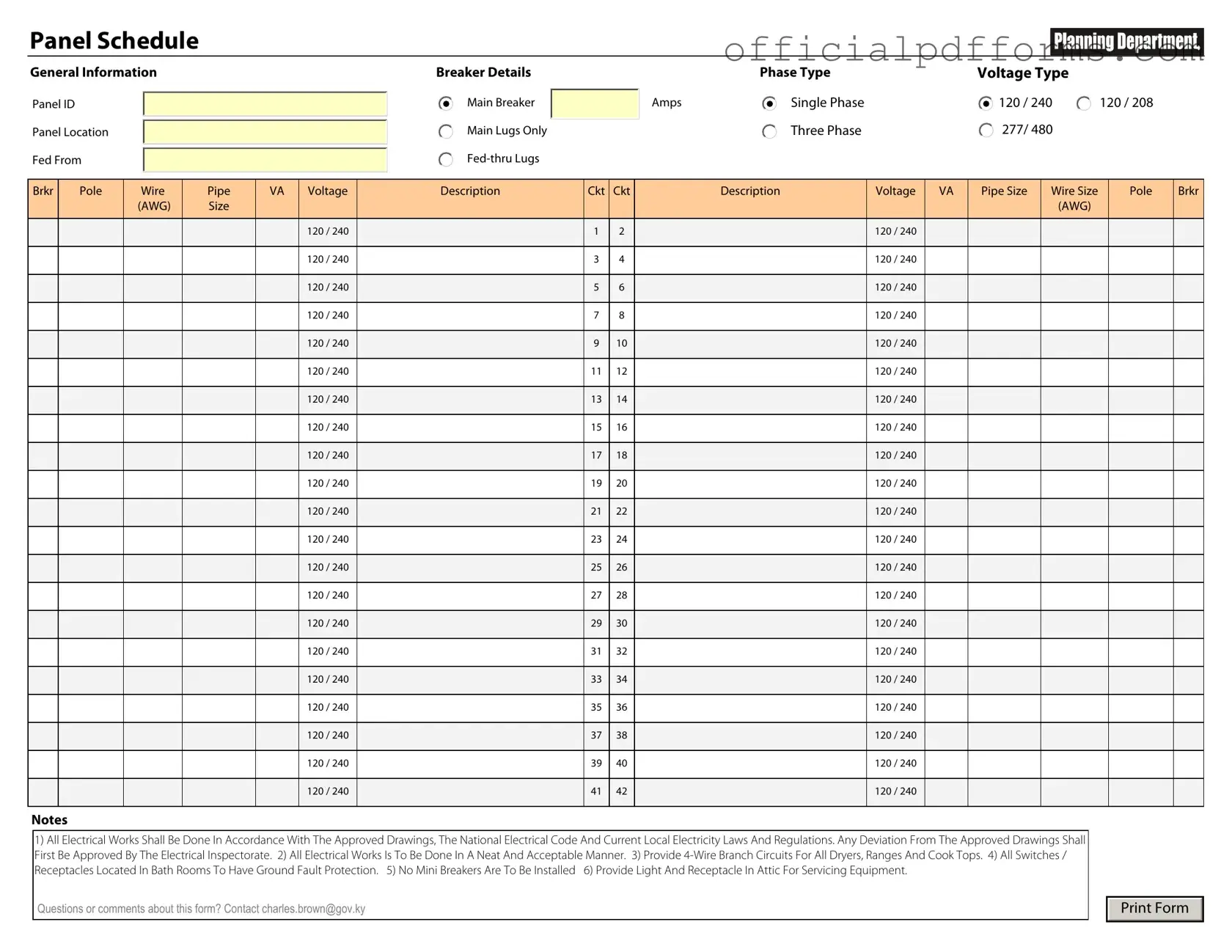What is an Electrical Panel Schedule?
An Electrical Panel Schedule is a document that provides a detailed overview of the electrical circuits and components within a specific electrical panel. It typically includes information such as circuit numbers, the load each circuit supports, and the breakers associated with each circuit. This schedule is essential for ensuring that the electrical system operates safely and efficiently.
Why is an Electrical Panel Schedule important?
The Electrical Panel Schedule is crucial for several reasons:
-
It helps electricians and maintenance personnel quickly identify circuits and their loads.
-
It aids in troubleshooting electrical issues by providing a clear layout of the panel's configuration.
-
It ensures compliance with safety standards and local electrical codes.
-
It assists in planning for future electrical needs, such as adding new circuits or upgrading the system.
Who is responsible for creating the Electrical Panel Schedule?
The responsibility for creating the Electrical Panel Schedule typically falls on the electrical engineer or the electrician who installs the electrical system. However, it is also common for building owners or facility managers to maintain and update the schedule to reflect any changes made to the electrical system over time.
A comprehensive Electrical Panel Schedule should include the following information:
-
Panel name or number
-
Circuit numbers
-
Breaker sizes
-
Load calculations for each circuit
-
Type of load (e.g., lighting, outlets, HVAC)
-
Any special notes or considerations regarding the circuits
How often should the Electrical Panel Schedule be updated?
The Electrical Panel Schedule should be updated whenever changes are made to the electrical system. This includes adding new circuits, replacing breakers, or modifying loads. Regular reviews, at least annually, are also recommended to ensure the schedule remains accurate and reflects the current state of the electrical system.
Can I create my own Electrical Panel Schedule?
While it is possible to create your own Electrical Panel Schedule, it is advisable to consult with a licensed electrician or electrical engineer. They have the expertise to ensure that the schedule is accurate and complies with relevant codes and safety standards. Additionally, they can help you understand the specific needs of your electrical system.
What are the consequences of not having an Electrical Panel Schedule?
Not having an Electrical Panel Schedule can lead to various issues, including:
-
Increased risk of electrical hazards, such as overloads and short circuits.
-
Difficulty in troubleshooting electrical problems, which can result in longer downtime.
-
Non-compliance with local electrical codes, which could lead to fines or safety violations.
-
Challenges in planning for future electrical upgrades or expansions.
Where can I find a template for an Electrical Panel Schedule?
Templates for Electrical Panel Schedules can be found online through various websites that specialize in electrical engineering resources. Additionally, software programs designed for electrical design often include built-in templates. It is essential to choose a template that suits your specific needs and allows for easy customization.
While there is no universally mandated format for an Electrical Panel Schedule, most schedules follow a similar layout for clarity and consistency. Typically, the schedule is presented in a table format, with columns for circuit numbers, load types, breaker sizes, and any additional notes. It is important that the format used is clear and easy to understand for anyone who may need to reference it.
